SLVSFP3C August 2020 – March 2022 TPS61288
PRODUCTION DATA
- 1 Features
- 2 Applications
- 3 Description
- 4 Revision History
- 5 Device Comparison
- 6 Pin Configuration and Functions
- 7 Specifications
- 8 Detailed Description
- 9 Application and Implementation
- 10Power Supply Recommendations
- 11Layout
- 12Device and Documentation Support
- 13Mechanical, Packaging, and Orderable Information
Package Options
Mechanical Data (Package|Pins)
- RQQ|11
Thermal pad, mechanical data (Package|Pins)
Orderable Information
7.6 Typical Characteristics
TA = 25°C, fSW = 500 kHz, unless otherwise noted.
TA = 25°C, fSW = 500 kHz, unless otherwise noted.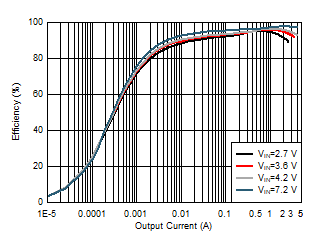
Figure 7-1 Efficiency vs
Output Current VOUT = 13 V. TA = 25°C, fSW = 500 kHz, unless otherwise noted.

| VIN = 2.7 V; 3.6 V; 4.2 V; 7.2 V | VOUT = 13 V | |
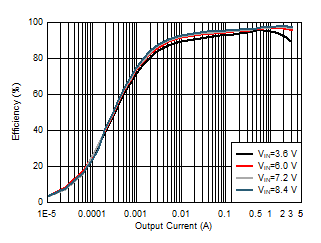
| VIN = 3.6 V; 6 V; 7.2 V; 8.4 V | VOUT = 16 V | |
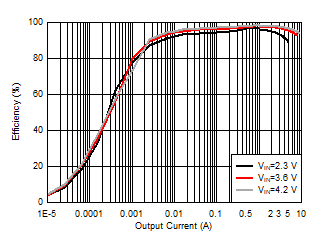
| Separate power VIN and 3.3 V signal VIN | VOUT = 5.5 V | |
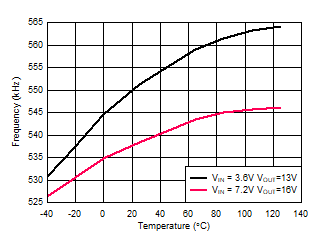 Figure 7-7 Switching
Frequency vs Temperature
Figure 7-7 Switching
Frequency vs Temperature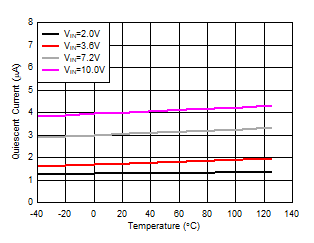
| VIN = 2.0 V; 3.6 V; 7.2 V; 10 V | VOUT = 13 V |
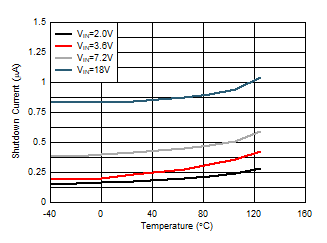 Figure 7-11 Shutdown
Current vs Temperature
Figure 7-11 Shutdown
Current vs Temperature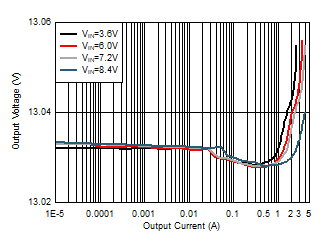
| VIN = 2.7 V; 3.6 V; 4.2 V; 7.2 V | VOUT = 13 V | |

| VIN = 3.6 V; 6 V; 7.2 V; 8.4 V | VOUT = 16 V | |
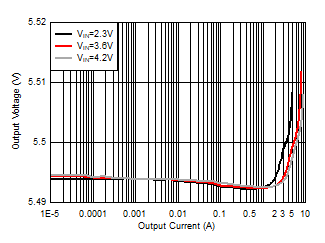
| Separate power VIN and 3.3 V signal VIN | VOUT = 5.5 V | |
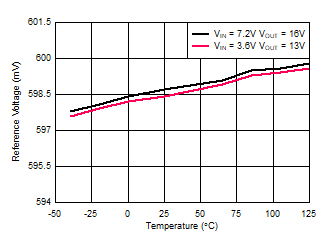 Figure 7-8 Reference
Voltage vs Temperature
Figure 7-8 Reference
Voltage vs Temperature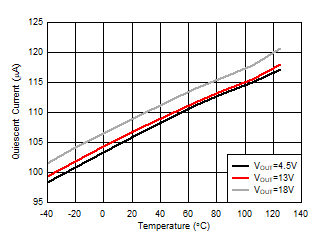
| VIN = 3.6 V | VOUT = 4.5 V; 13 V; 18 V |